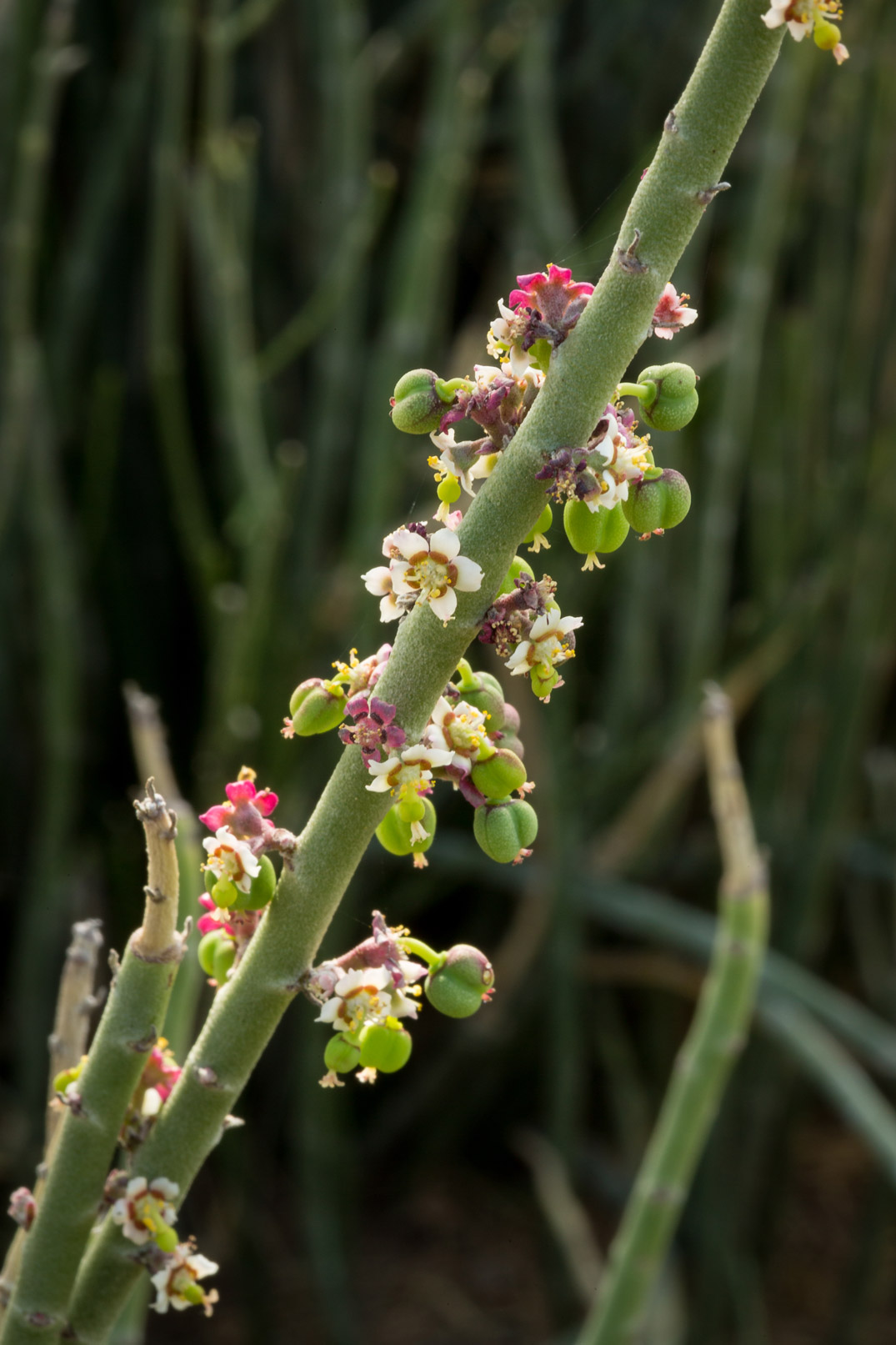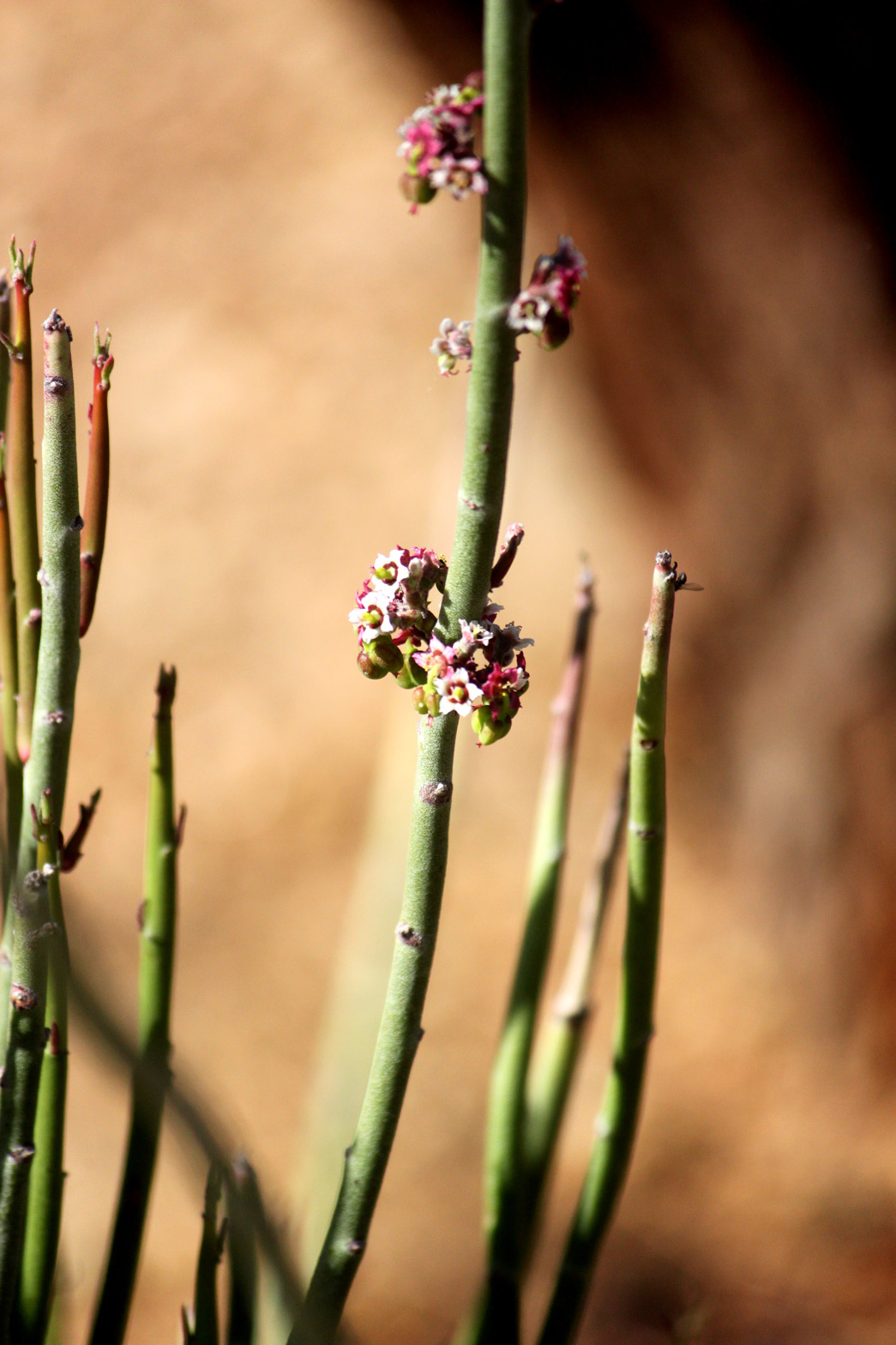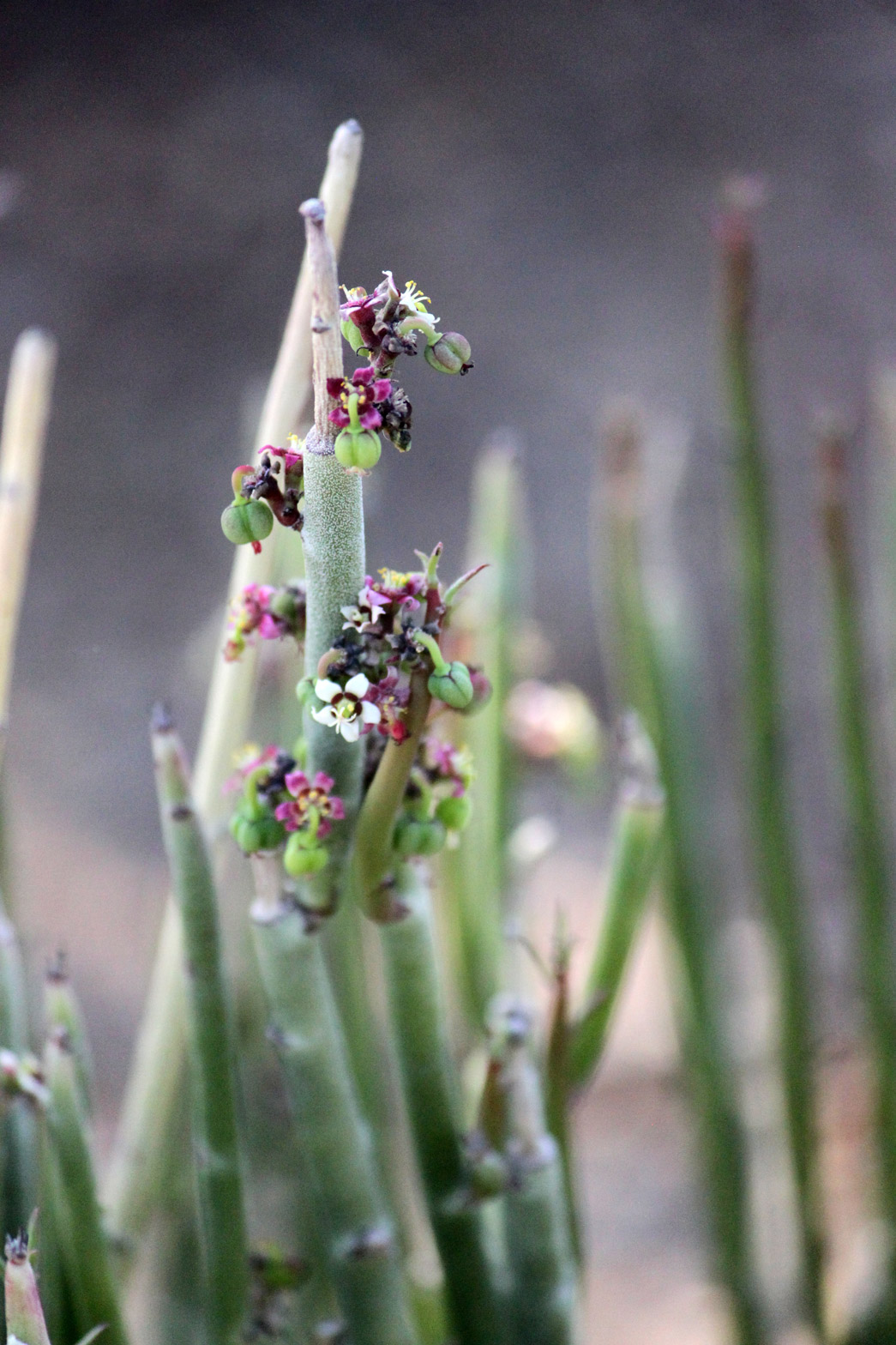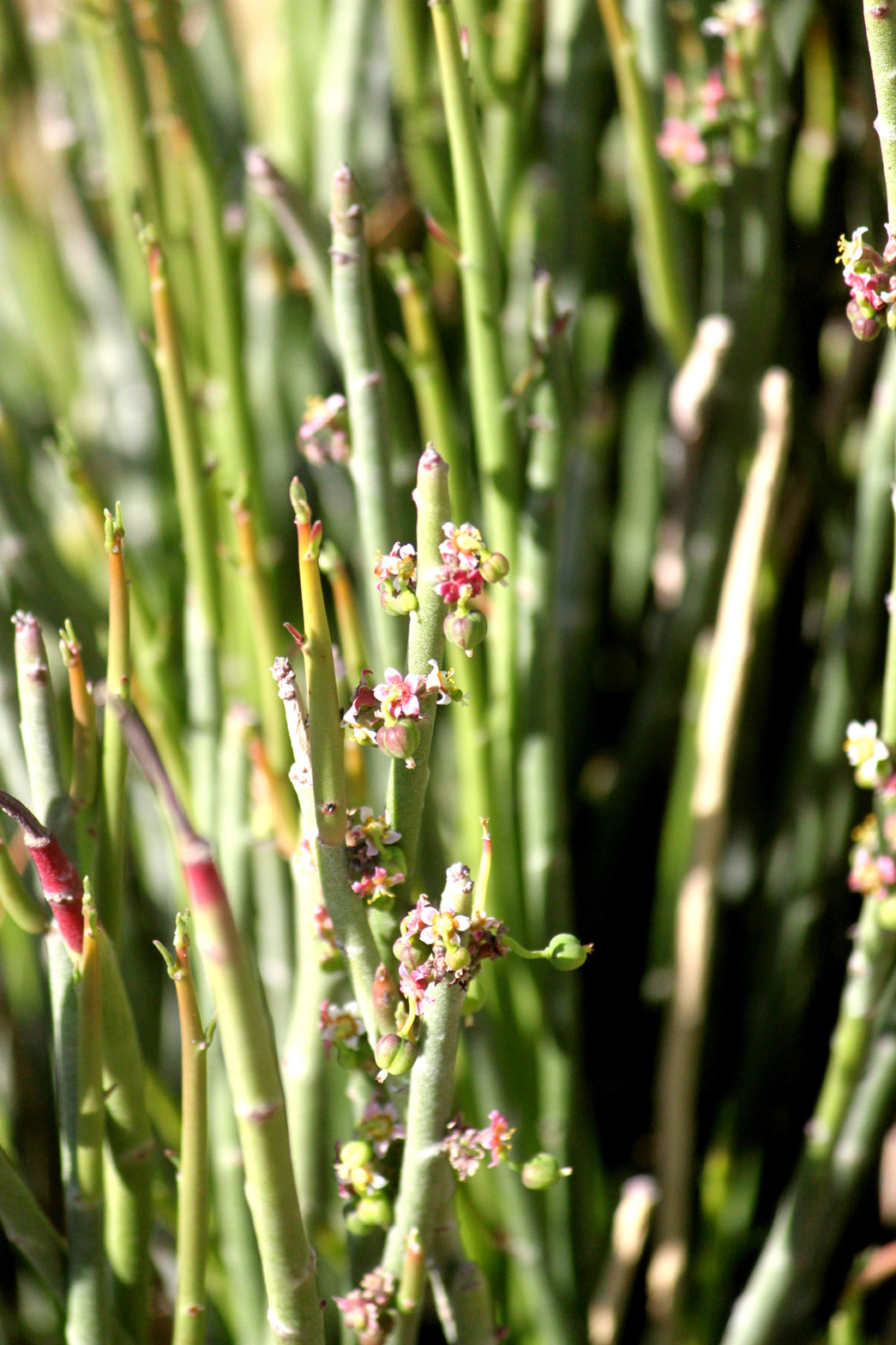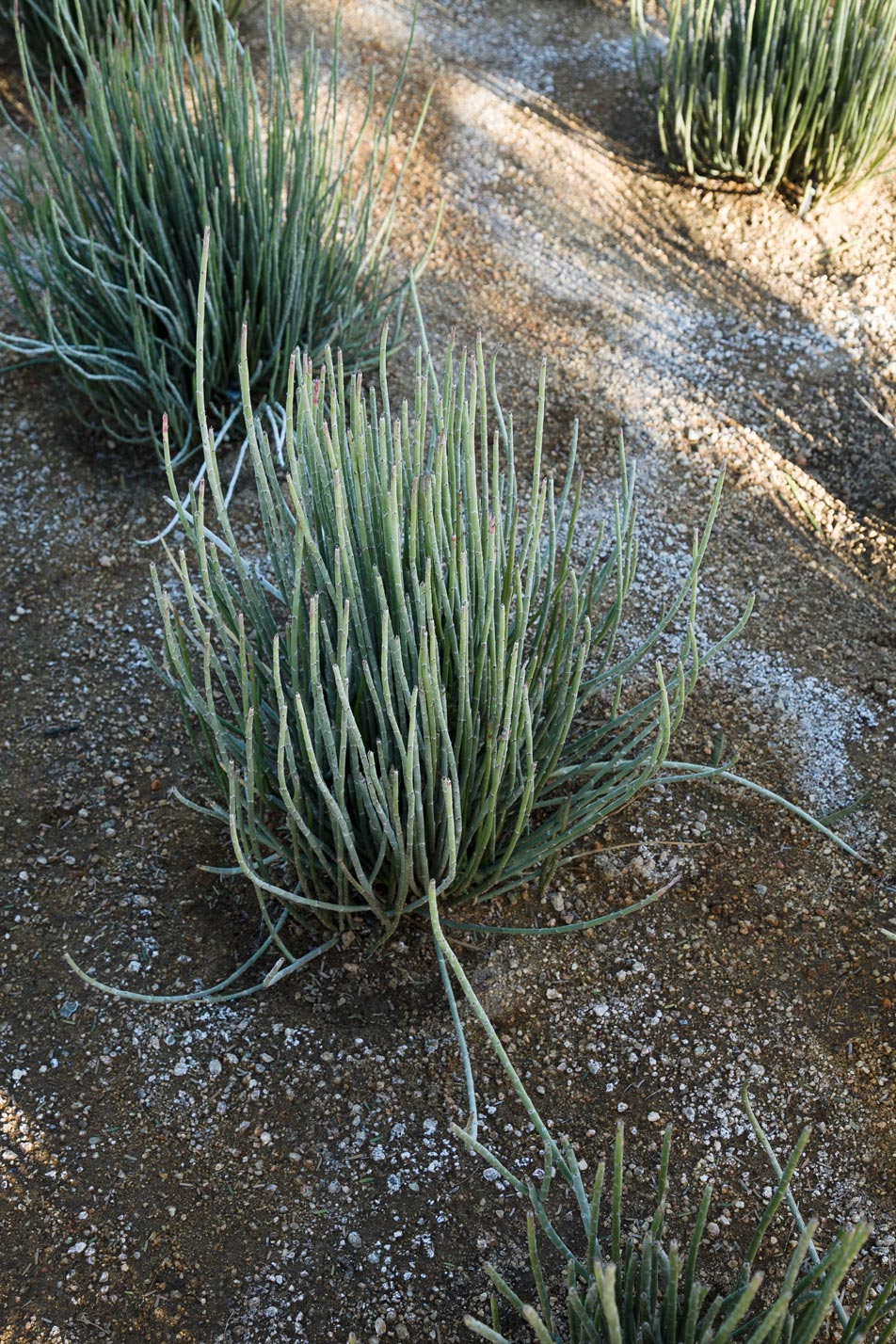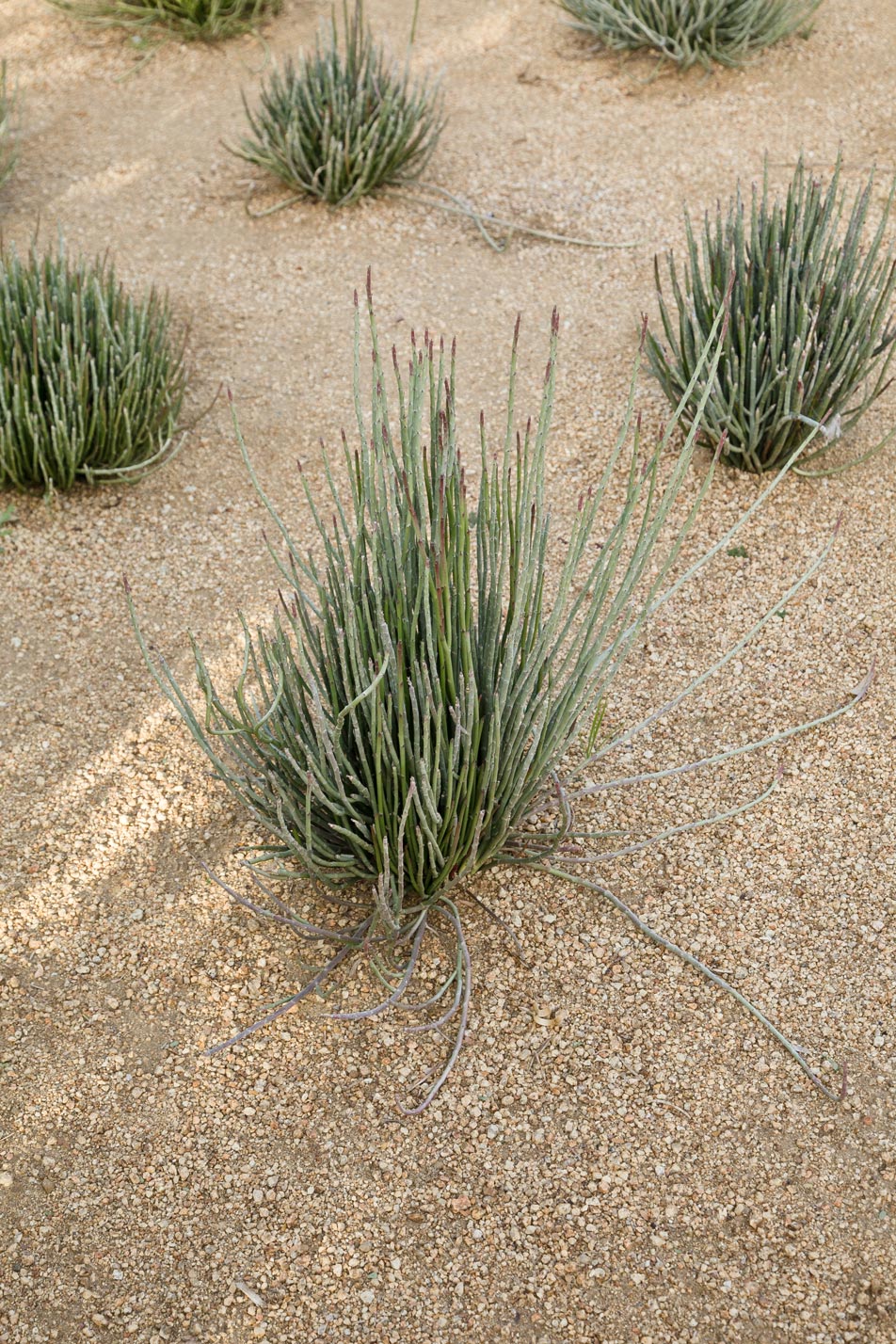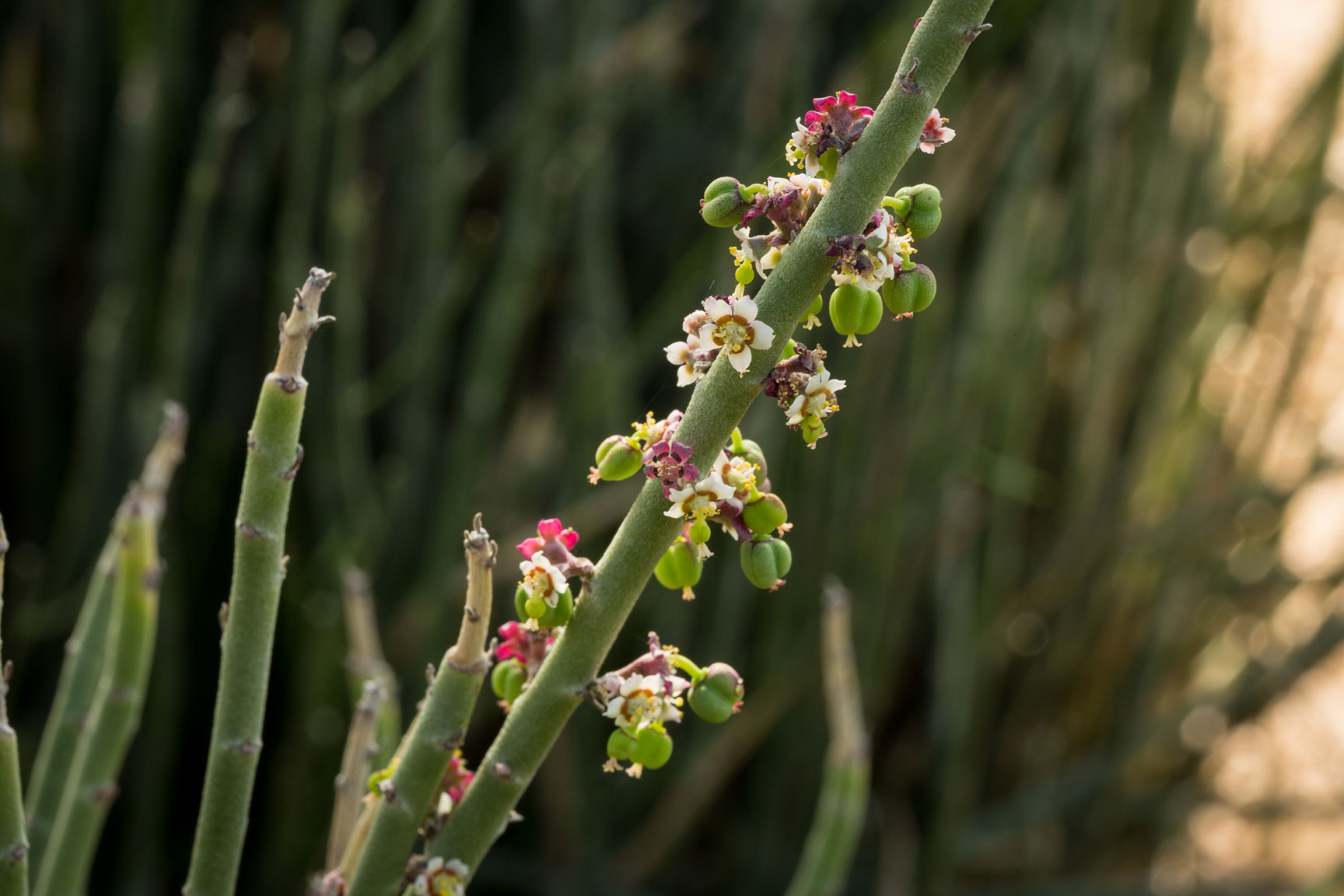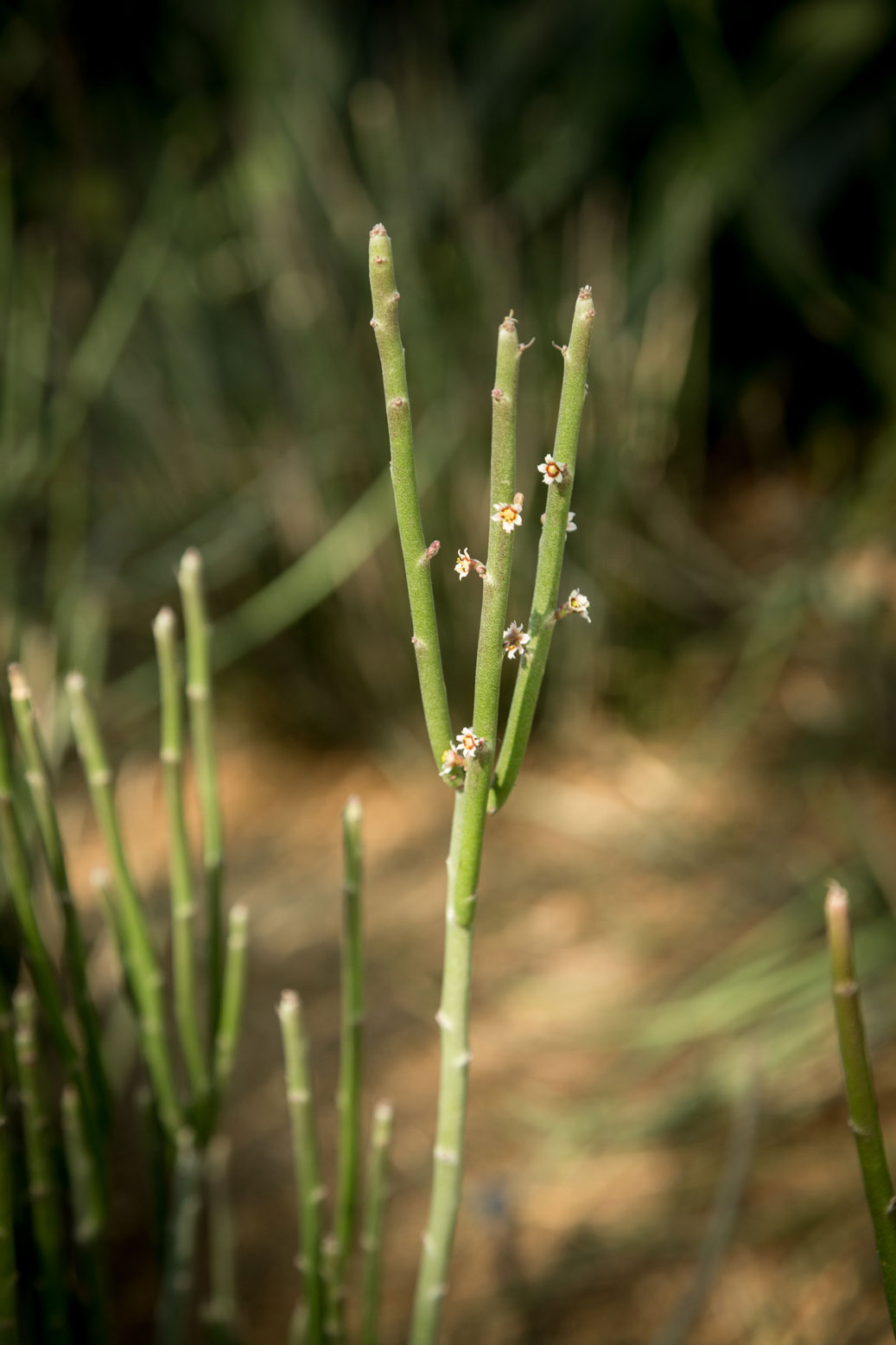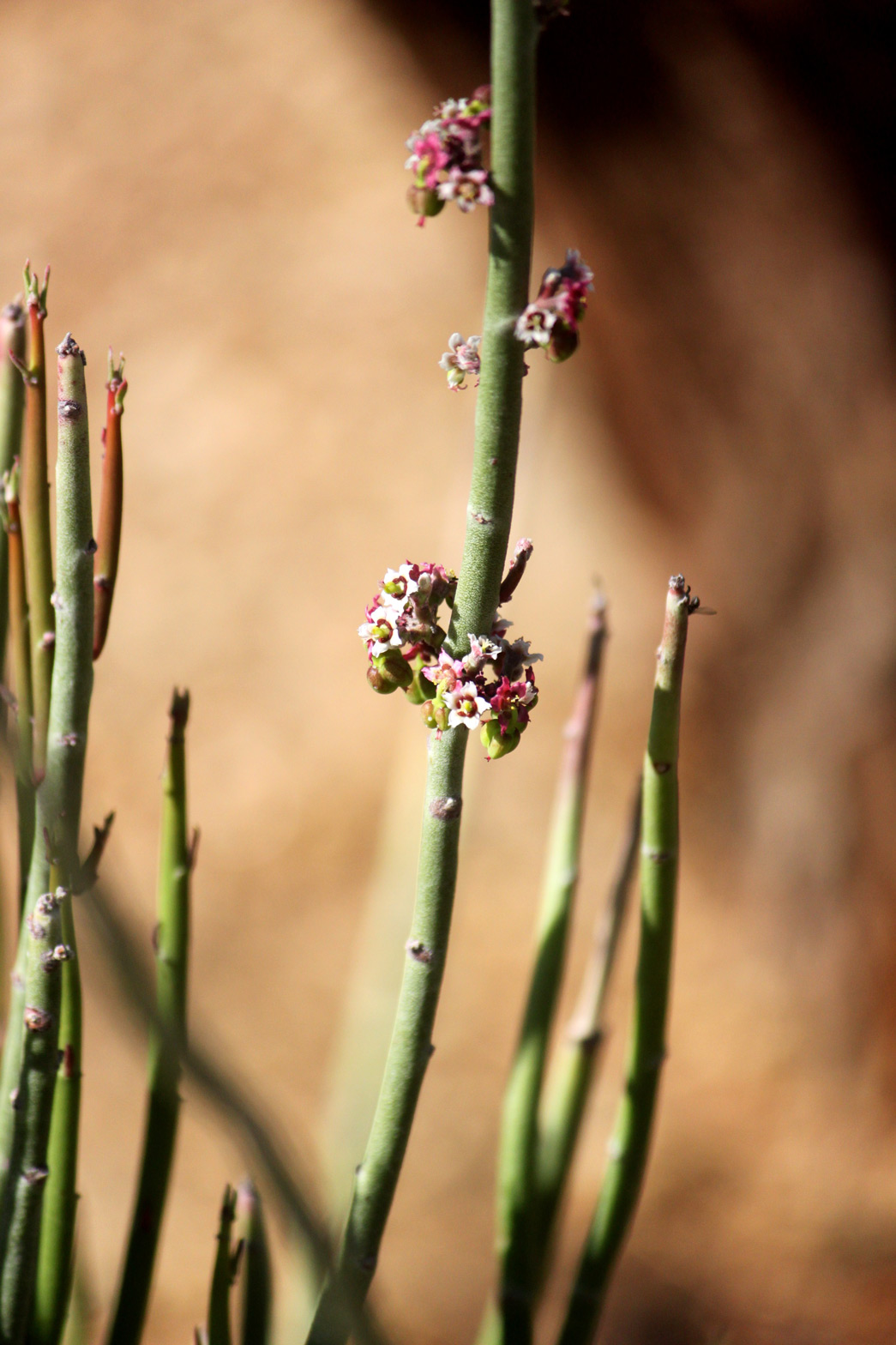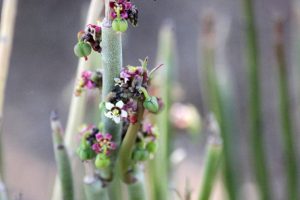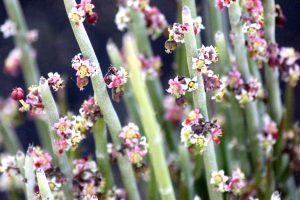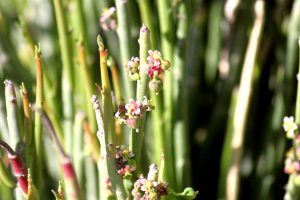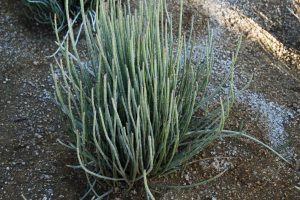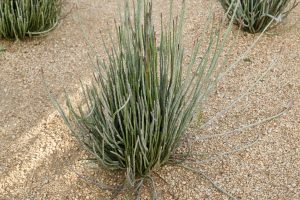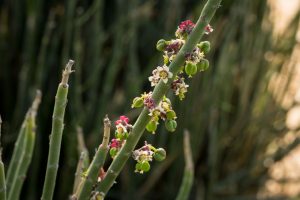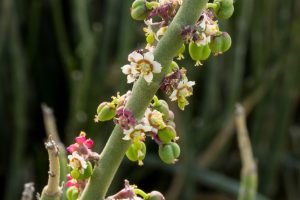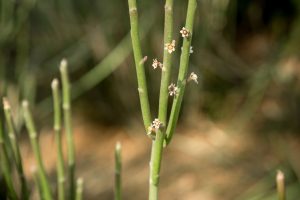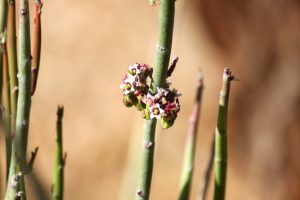The name Candelilla is attributed to more than one source. It is associated with the shape in which it grows, resembling a cluster of little tapered candles, but also because it is used as a source of wax. The species name of antisyphilitica references medicinal qualities associated with this plant.
Candelilla prefers limestone slopes and hillsides on which it can capture water flowing down in the rainy seasons. Its identification as a medicinal plant, along with its sourcing for wax, has resulted in over-harvesting in its native regions.
After rains in the spring and summer, it forms a stunning display of pink flowers up and down the stems. The seedpod that follows resembles a tiny lantern hanging off the stem. It is really a stunning bloom, but the very small flowers are about the size of a pencil eraser and are best viewed close up to see their incredible detail.
In the United States, it is found in Texas and southern New Mexico, and in Mexico it is found in Chihuahua, Coahuila, Hidalgo, and Querétaro.
Euphorbia vs. Cactus
Euphorbias may be referred to as an “Old World” plant and compared to those that are Cactaceae (cactus) which are referred to as a “New World” plant. “Old World” refers to plants with origins in Africa, Asia, and Europe. The “New World” refers to North, Central, and South America. While possibly meaningful for the purpose of biogeographic classifications, it is problematic because it places a colonial lens on the origin of species.
The origin of these terms according to the World Atlas:
‘‘Amerigo Vespucci, a Florentine explorer, coined the term New World (Mundus Novus). He quoted the term in a letter he had written to his friend Lorienzo di Pier in the spring of 1503. In his letter, he asserted that the lands discovered by European navigators were not the edges of Asia as Christopher Columbus stated. Instead, they belonged to an entirely distinct continent, the “New World.” Another explorer, the Italian born Peter Martyr, supported the context of the New World. He used the term ‘Orbe Novo’ translated as ‘New Globe’ upon discovering the Americas in 1511.”
Euphorbias are indeed found in the Americas. Some Euphorbias at Sunnylands are native species to the Americas, so those looking for native species in the gardens can include this species on that list.
A better way to distinguish Euphorbia, which can sometimes look similar to a cactus, is by the white, milky latex that is in Euphorpia. Cactus will have a clear sap. This latex does have a toxicity level and may cause skin rashes if handled.
